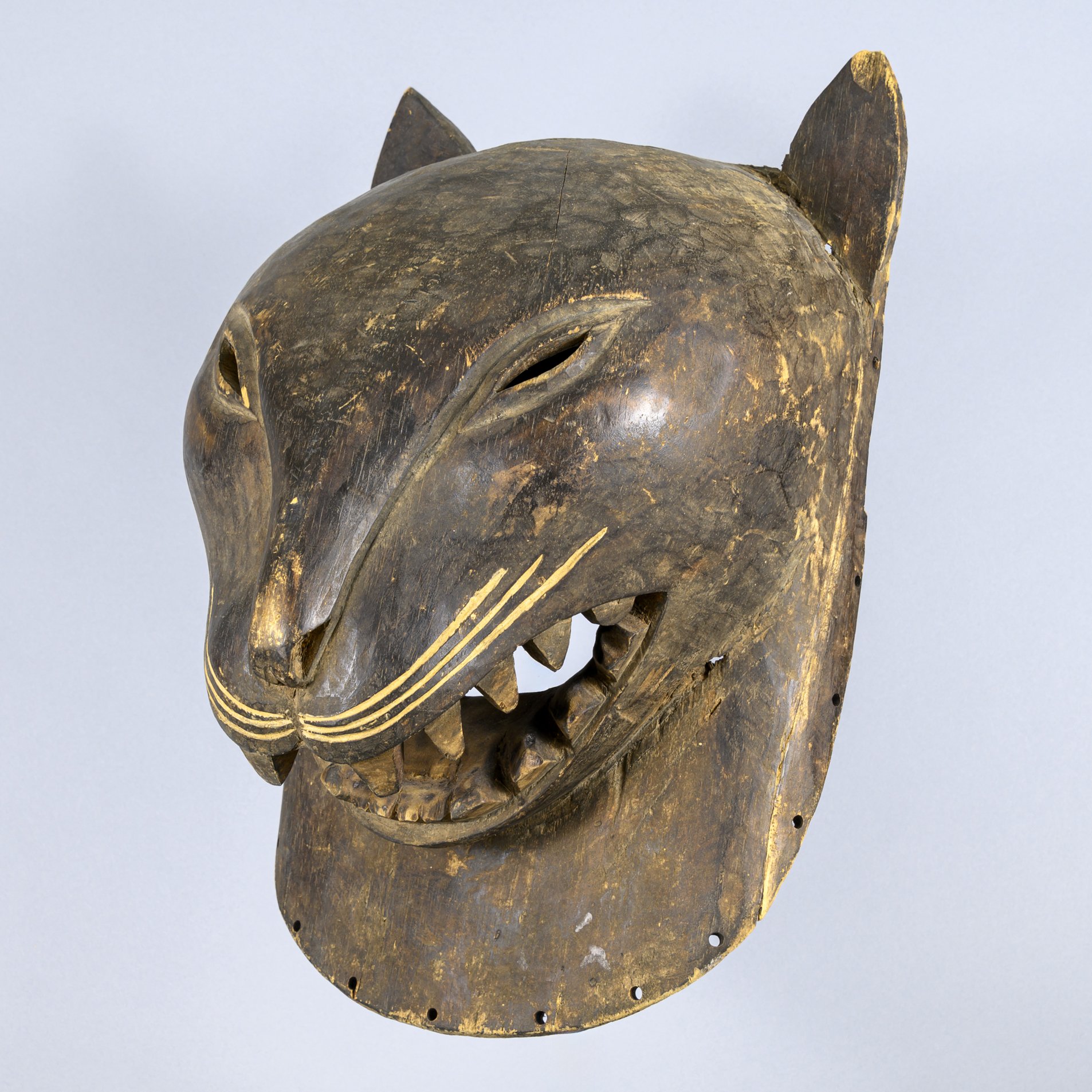
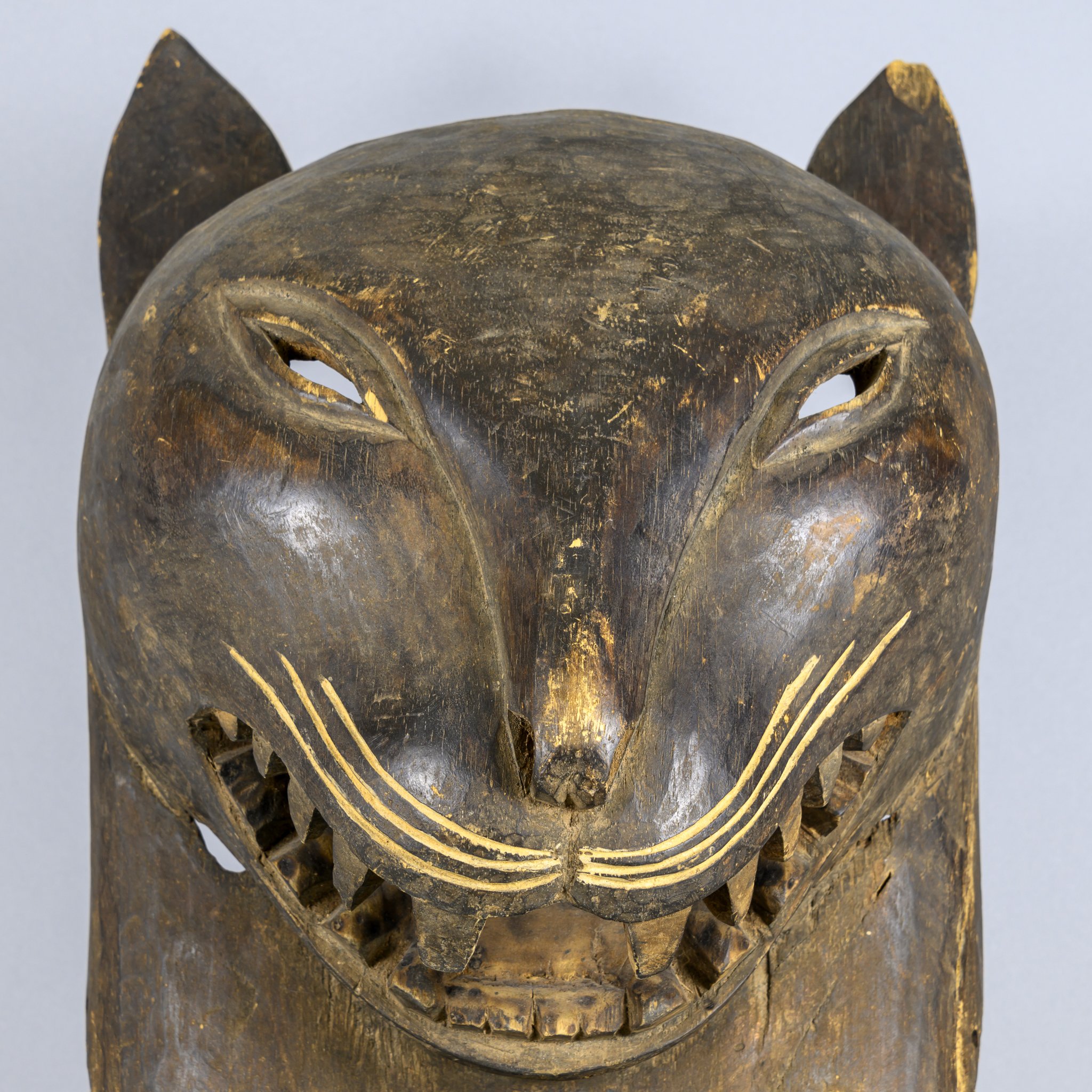
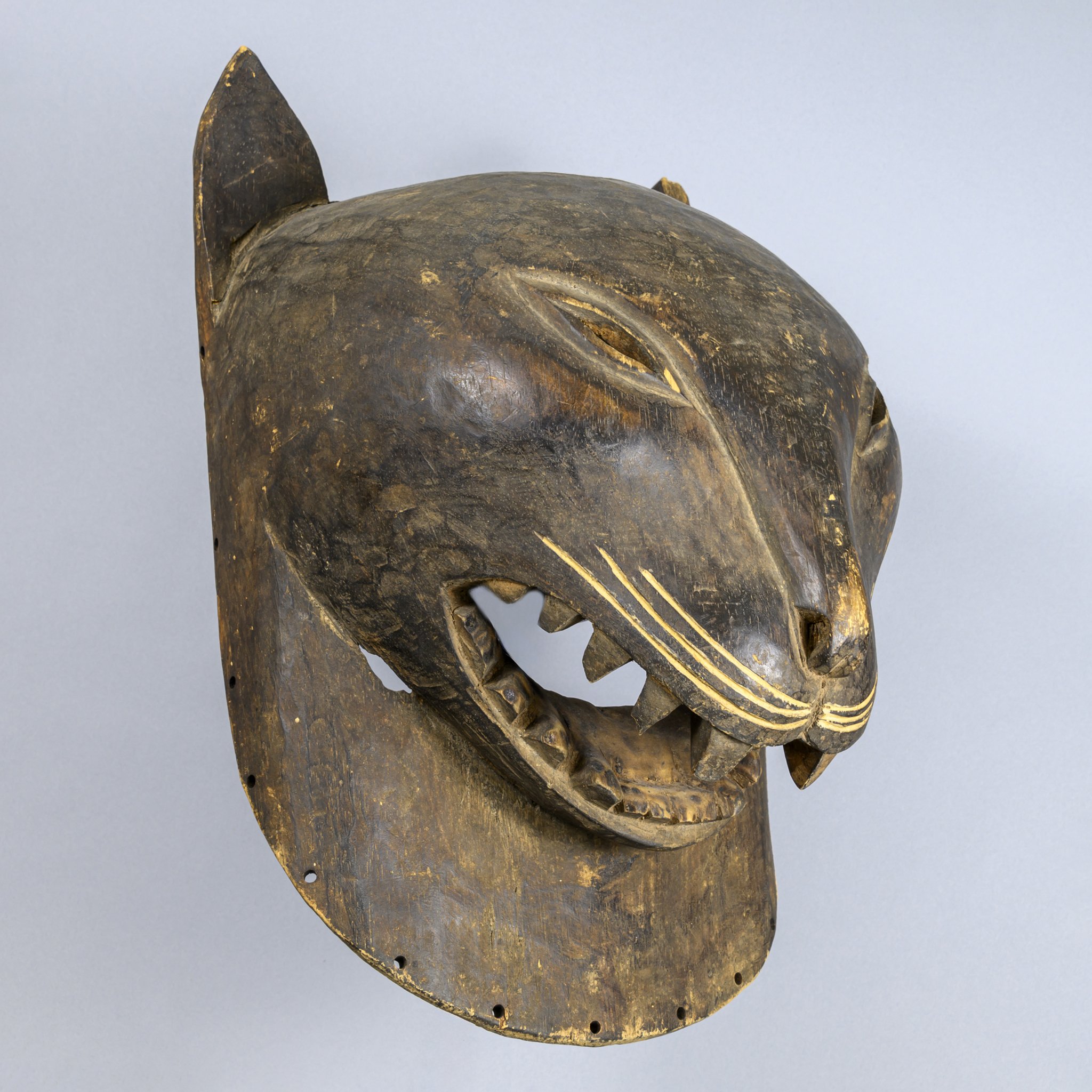
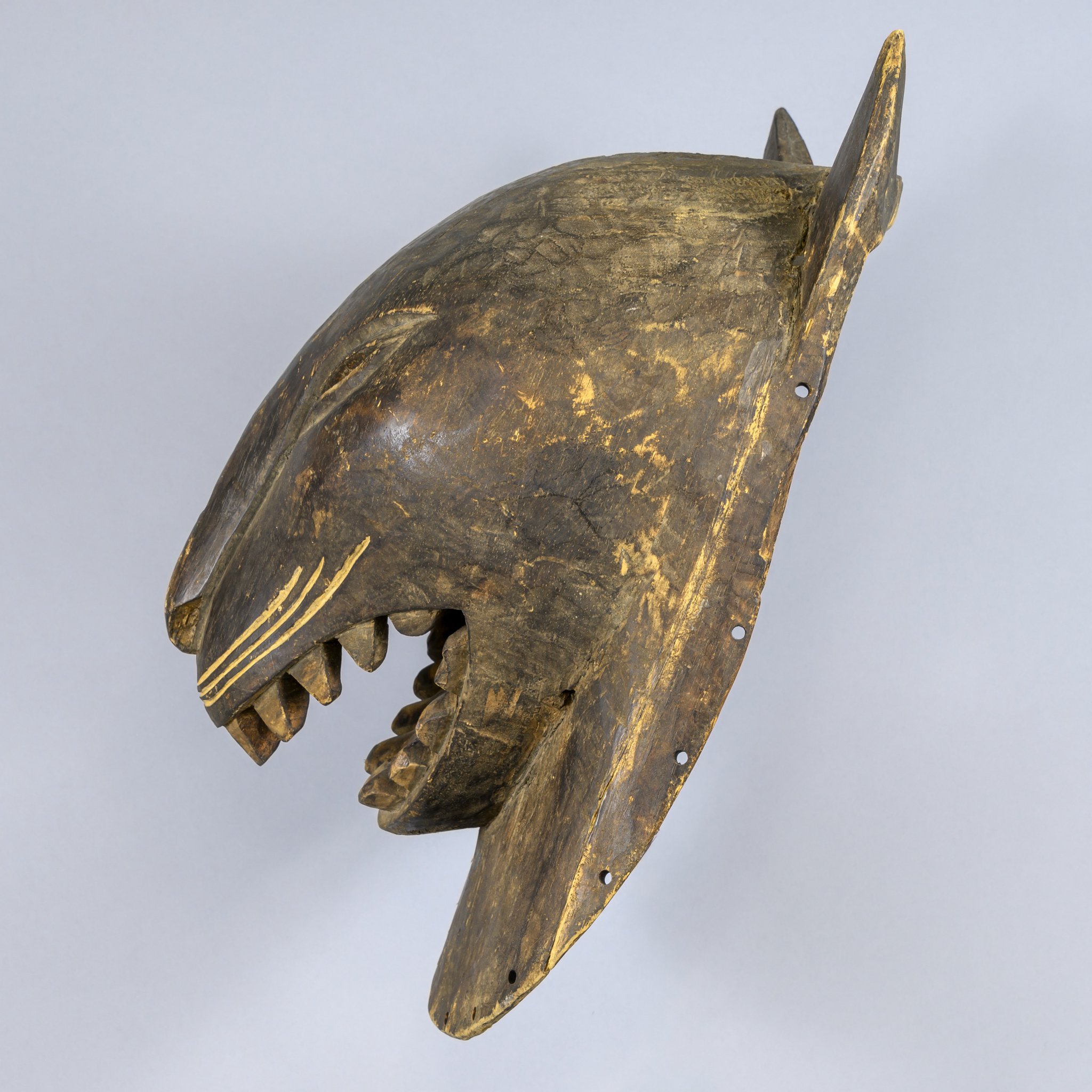
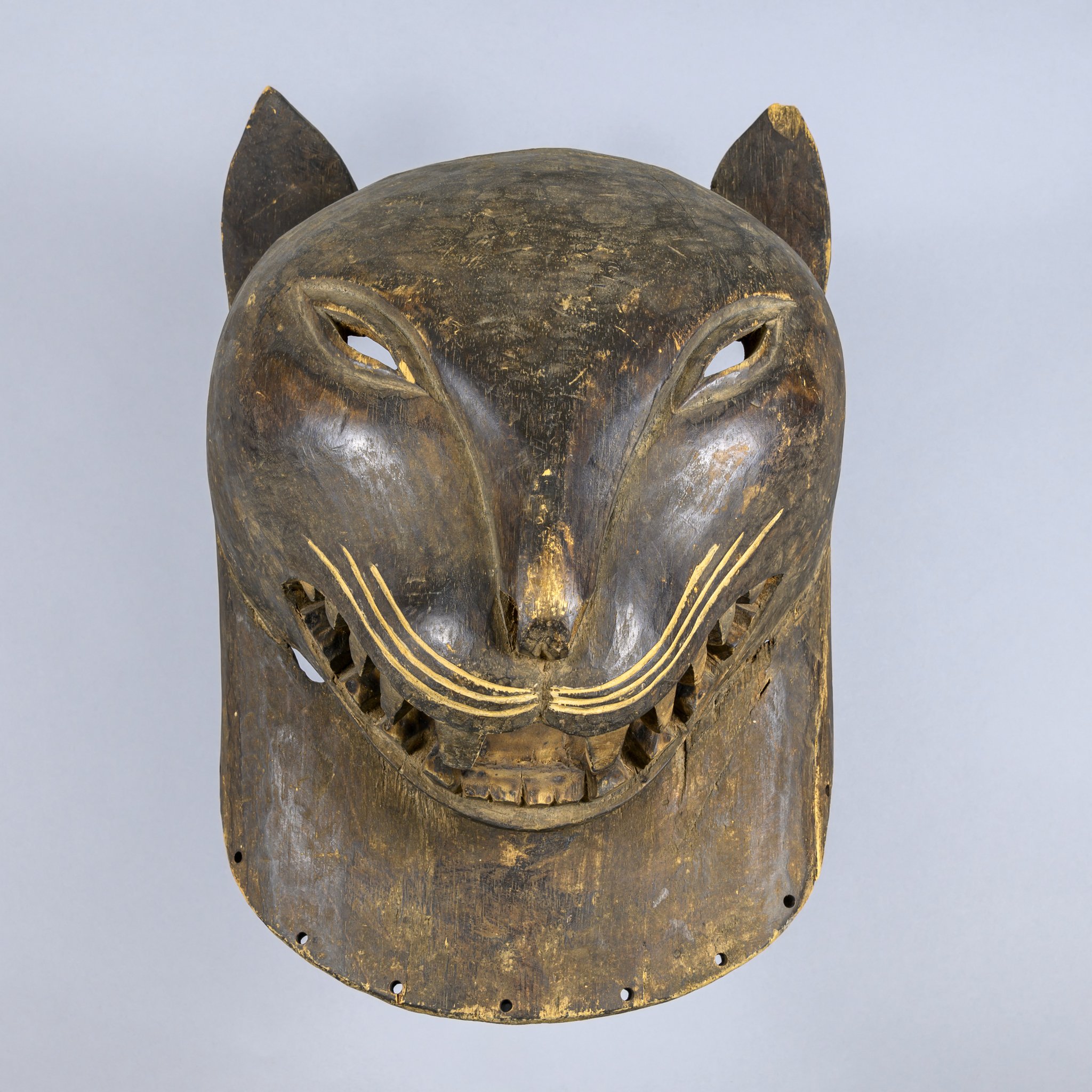

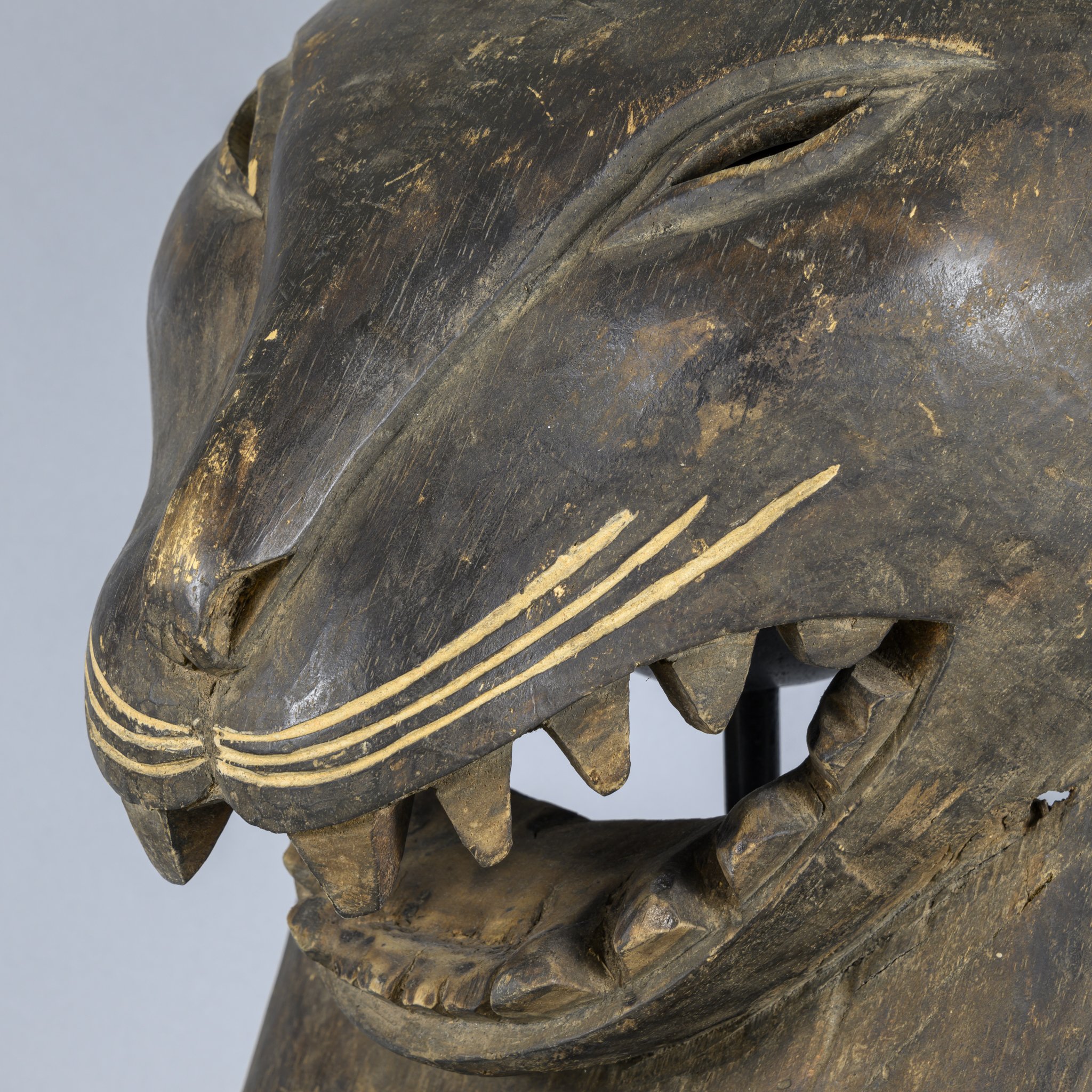
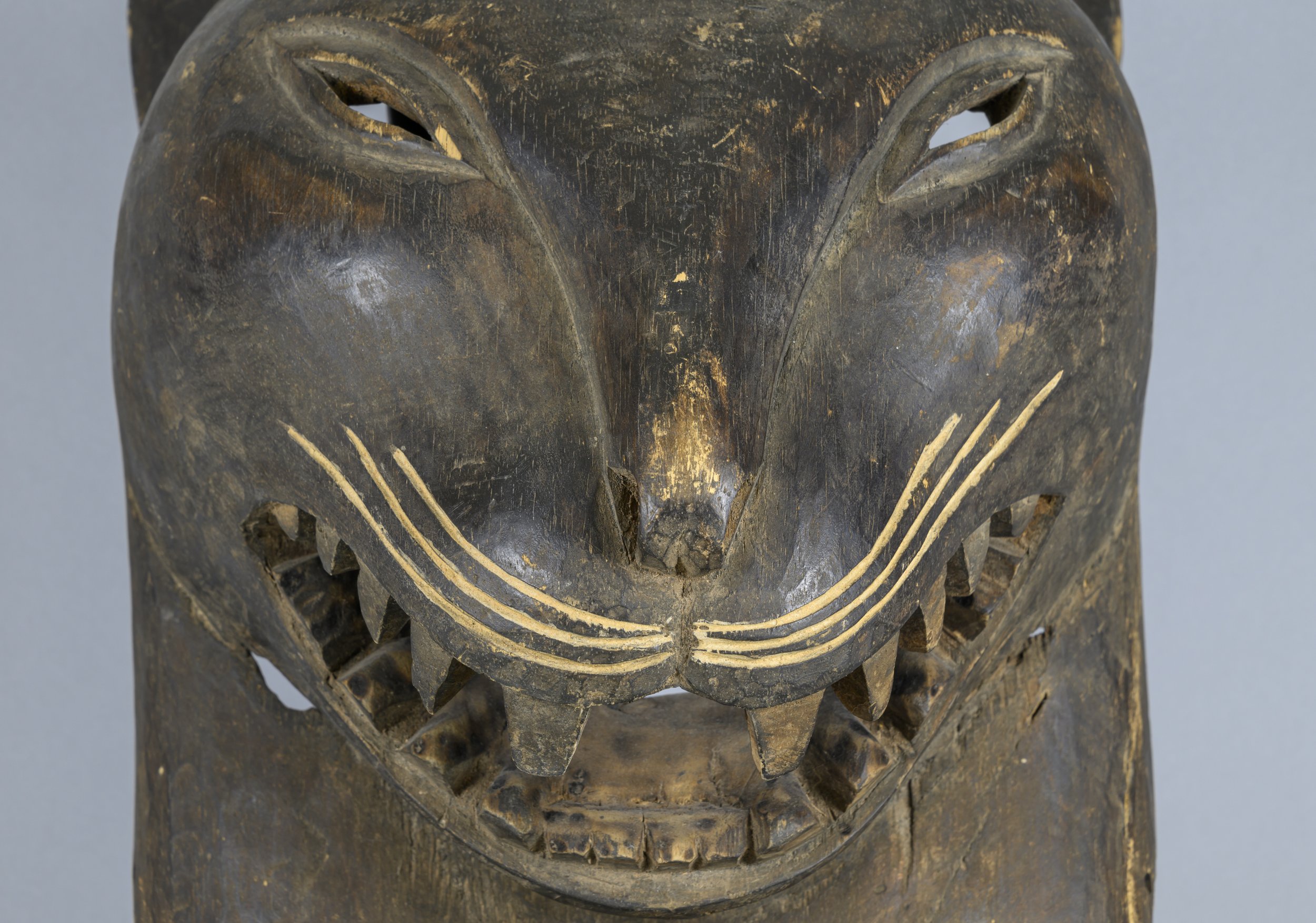

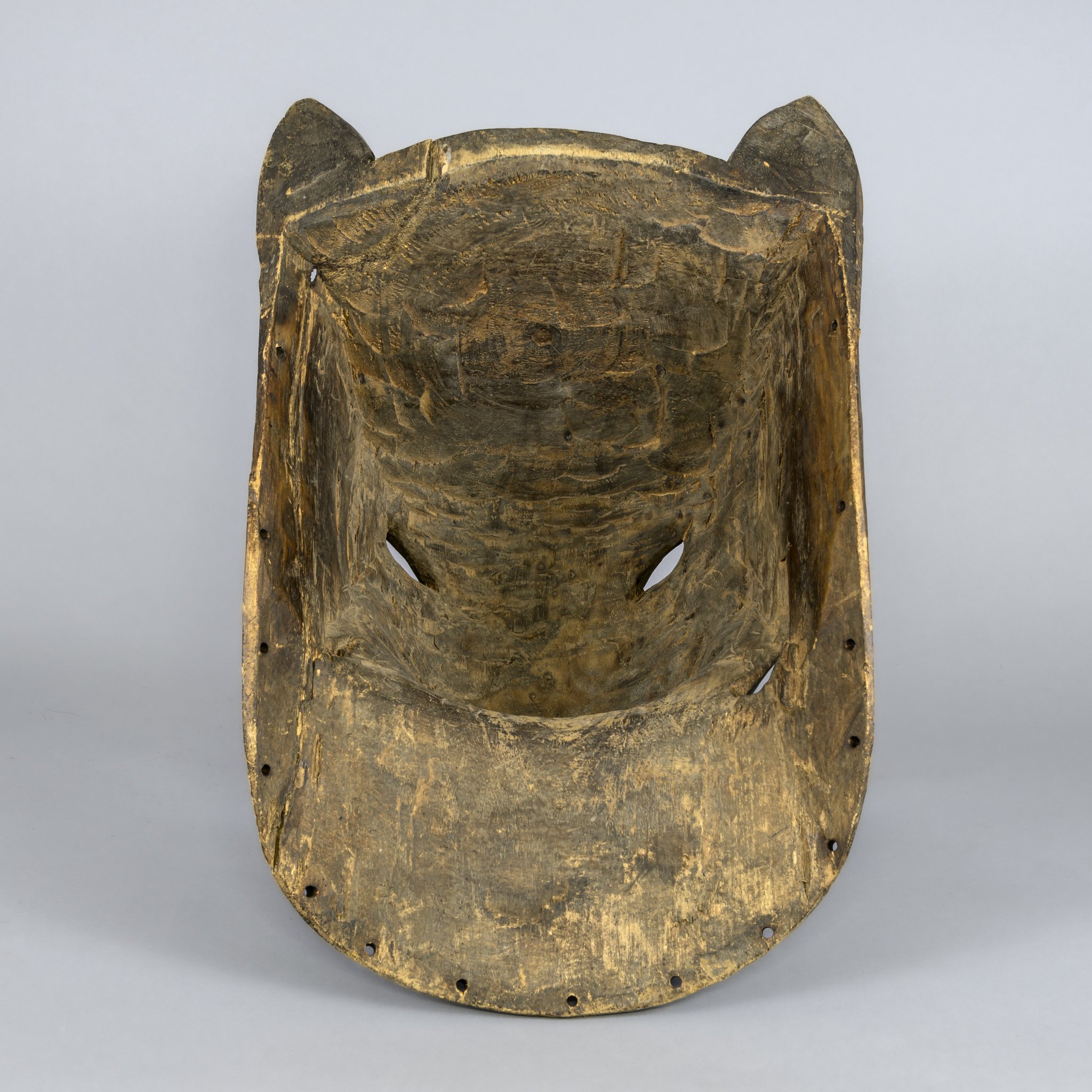
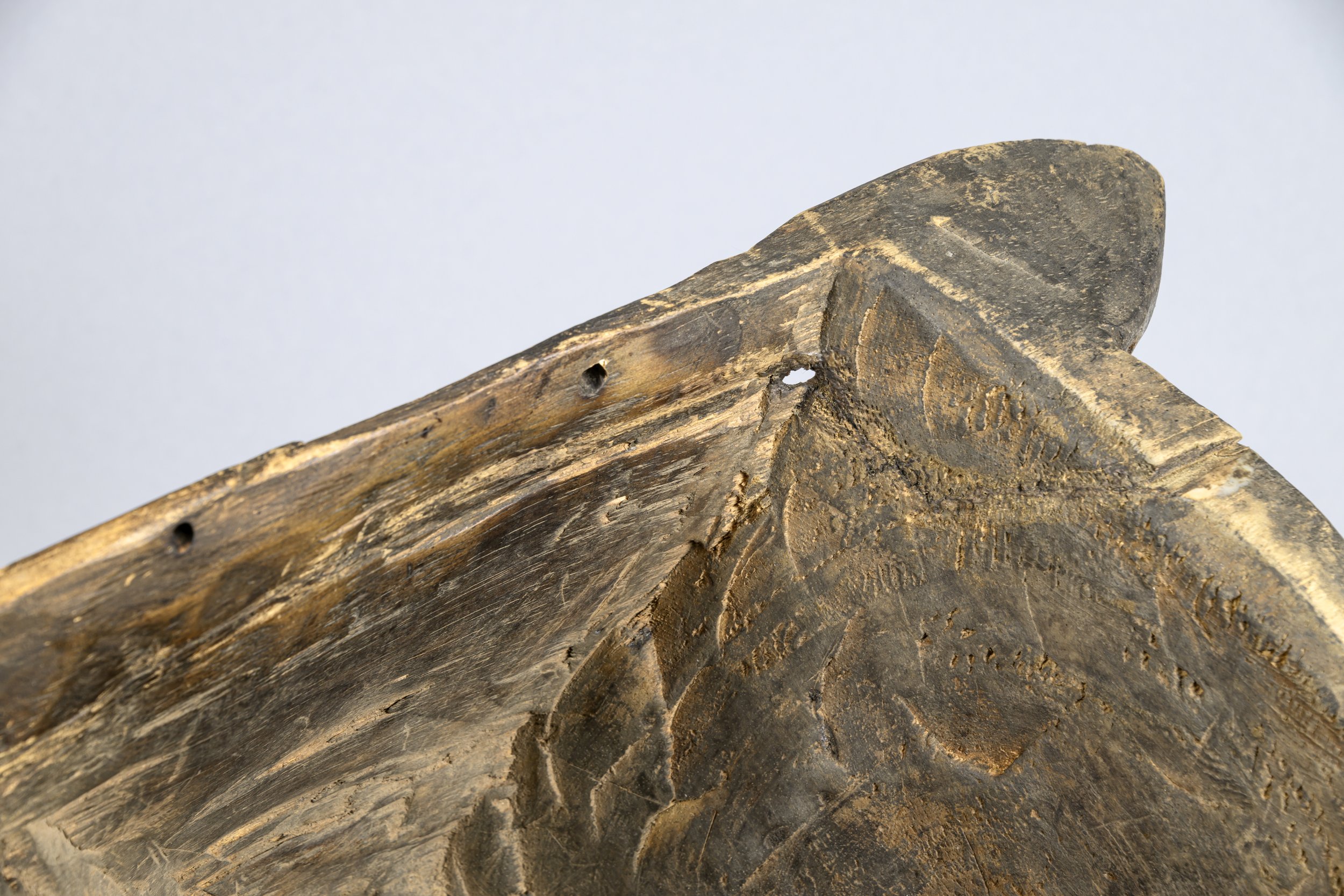
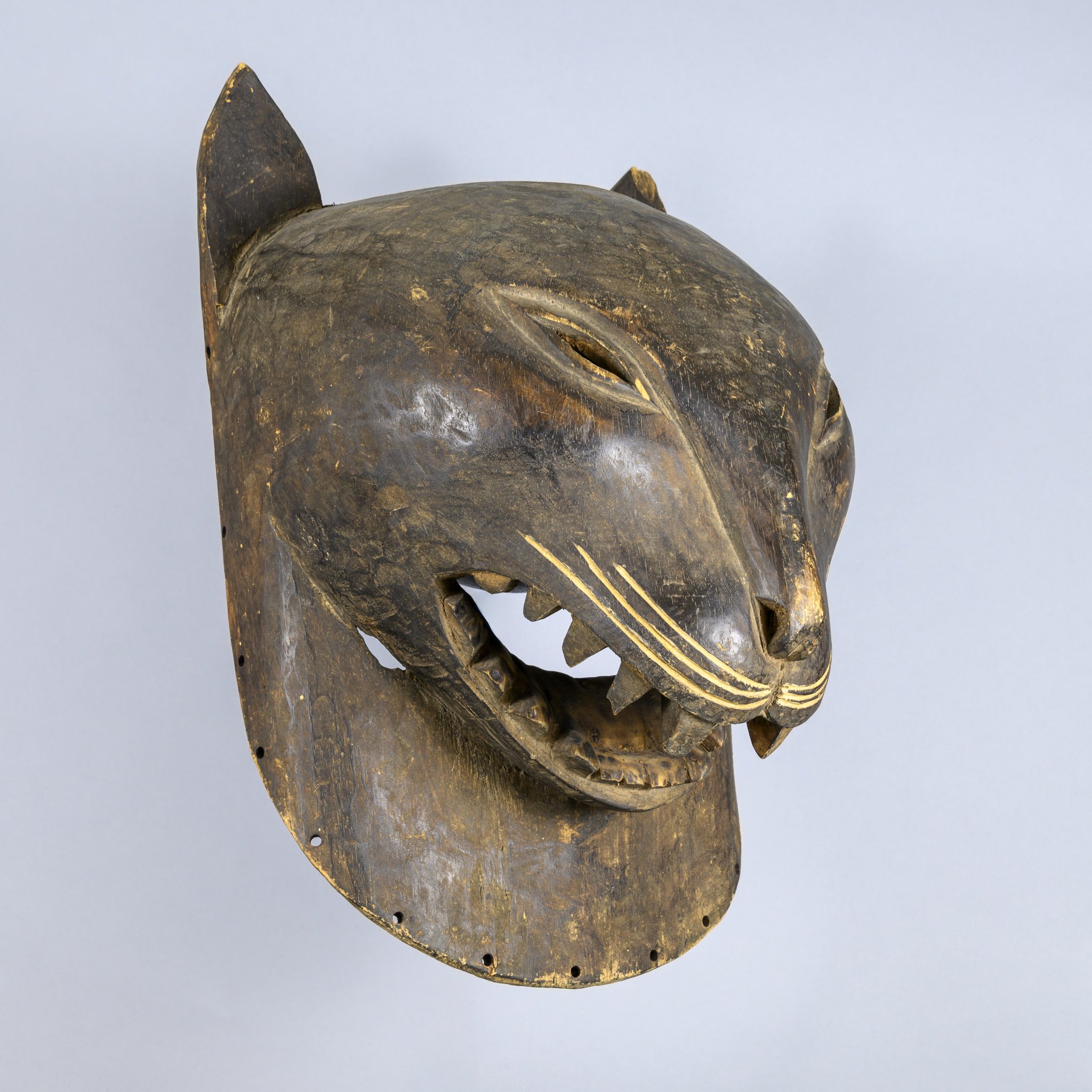


Luba Leopard Mask, Democratic Republic of the Congo
20” tall by 12” wide by 11” deep
wood, pigment
mid 20th century
collection of Chris Doane
*previous damage and repair on the left-hand side of the mask
A large and dynamic mask depicting a more naturalistic representation of a leopard. While at first glance it might seem that the mask is too large to be worn, when you take it and put it up to your face it fits the contour of your head perfectly and you can see out of the eye-holes as you would expect. These masks were attached to costumes made of fiber, just as the Kifwebe masks were. There are versions of animal masks that have white pigment and striations on them as are found on Kifwebe masks, and there are versions that do not have striations but do have pigment, and there are variations like this one that have neither.
It is stated in the book “Beauty and the Beasts” by Marc Leo Felix that the more naturalistic animal masks, those generally without striations, come from the southern area of Luba territory , somewhere between the towns of Kiambi and Mithwaba, an area occupied mainly by the Kunda, Eastern Luba and Zela people. He states that today we now know that the Eastern Luba, the Luba-Upemba, the Zela, and the neighboring Luba-influenced peoples living between Lake Upemba and Lake Tanganyika, all used some type of zoomorphic mask. Various animals were depicted in the zoomorphic masks, but primarily the leopard, monkey, buffalo, antelope and owl.
Marc Leo Felix dedicates a large portion of “Beauty and the Beasts” to animal masks, and if you do have that book there is a lot of good information in it, but I found the section below to be interesting and thought I would include it here:
”Why would anyone want to depict animals in their masks? Is it in order to have control over these animals? in order to bond with them? or in order to ask specific animals to intercede on behalf of the living with the animal realm? Is the goal to ask specific animals to intervene with the spirit world of animals on behalf of the living? or to ask these animals to be the messenger between the living with the different nature spirits residing in the realm where each specific animal dwells? Or perhaps the purpose of these animal masks is to portray some of each animal's strengths or weaknesses and associate these traits with specific members of the community, or with specific groups, or even with the community as a whole.
Conceivably each family, lineage or clan (an ambiguous word), associated itself with a given type of animal. Thus each animal (and its mask) could represent a subdivision of the society. Let's not forget that in southeast Congo, the clans to which people belong all have animal names, rather than names of human founders as is customary else-where.
Another possibility is that the animal masks portray the "wild" side of the community, whereas the female companion masks illustrate the opposing "civilized" side. Burton says that among the southern Luba some important ancestors where reincarnated as animals, so could these animals represented on masks refer to humans after all?”
- from “Beauty and the Beasts” by Marc Leo Felix
$2200 plus shipping
Click/Tap on any image below to bring up the image viewer.
INQUIRE
If you have questions, requests for high resolution photos, or would like to inquire about purchasing this object please use this form.
INQUIRE
If you have questions, requests for high resolution photos, or would like to inquire about purchasing this object please use this form.

